Razer Blade Stealth and Core Review
Manufacturer: RazerBlade Stealth UK price: £999.99 - £1,949.99 (inc VAT); as reviewed: £1,249.99 (inc VAT)
Blade Stealth US price: $999.99 - $1,999.99 (ex Tax); as reviewed: $1,249.99 (ex Tax)
Core UK price: MSRP £499.99 (inc VAT) or £399.99 (inc VAT) if purchased with qualifying bundle
Core US price: $499.99 (ex Tax) or $399.99 (ex Tax) if purchased with qualifying bundle
Razer introduced the world to its Blade notebooks in 2011, although it wasn't until earlier this year that the super-slim Blade Stealth joined the family. Nonetheless, the last five years have seen European fans of Razer consistently quiz the company about when its Blade laptops would see a release this side of the Atlantic. The answer, as CEO and co-founder Min-Liang Tan told us at his EU keynote speech, is now. The Blade Stealth, Blade and Blade Pro are either available now or coming soon with localised keyboard layouts and proper regional support. The newly upgraded Blade Stealth is the first to enter the bit-tech labs, and it came accompanied by the Core, Razer's external GPU dock – we'll be taking an in-depth look at both parts here.
The new Razer Blade Stealth is, like its predecessor, a 12.5in ultrabook that's just 13.1mm thick. The main changes are under the hub (as well as EU availability and keyboards), with the new model being kitted out with Intel's Core i7-7500U dual-core processor – the first seventh generation (Kaby Lake) Intel Core CPU we've seen, even if it is a 15W TDP mobile part. There are also five different configurations of the Blade Stealth to suit certain needs and budgets with different RAM, storage and/or display options.
The most basic option hits a retail price of £1,000 and nets you a 2,560 x 1,440 IGZO touch-enabled display, 8GB of LPDRR3 1,866MHz RAM and 128GB of PCI-E NVMe storage. The next model up is the one we have today – a £1,250 laptop with 16GB of memory and a 256GB SSD. You can also upgrade to a 512GB SSD, which allows you to pick between the 1440p panel here (£1,350) or a 4K panel with 100 percent Adobe RGB coverage (£1,550). The highest spec option maintains this 4K panel and gives you a 1TB SSD too for £1,950. It's great to see such wide-ranging specification options as it gives the ultrabook wider appeal.
Razer uses a black, CNC-milled, unibody aluminium shell for the Blade Stealth and first impressions are good. These impressions vanish as soon as you touch the chassis, however, as the thing practically pulls fingerprints off of your digits in its eagerness to display them. Even just-washed, grease-free hands will easily leave visible marks and the small supplied cleaning cloth provides merely temporary relief. While this is admittedly an aesthetic criticism at its heart, there is practically universal consensus that easily marked materials are a negative, and it certainly detracts from the sleekness. This being Razer, the chassis has to be black, which is pretty much the worst colour for this property, but even so with five years under its belt making laptops we were hoping for a better finish.
Thankfully, the actual build quality is very high. Despite its size, the chassis is strong and resistant to flexing and creaking. The screen mechanism is also very nice, and we like the illuminated snake logo on the lid – it's nice to see someone other than Apple doing something interesting here.
Another plus is how exceptionally portable the Blade Stealth is. Its 13.1mm thickness makes it slimmer than the Dell XPS 13 and the Apple MacBook Air and at 1.29kg it's also lighter. Thankfully, the power adaptor is similarly very small: It will be no trouble at all to take this laptop with you, even when travelling light.
The Blade Stealth is equipped with a single Thunderbolt 3 connection in the form of a USB Type-C header. This is what the charger plugs into, as well as the Core (which charges the unit at the same time). As well as this, you get dual USB 3.0 ports – one on either side – and a HDMI output as well as a single, mobile-style audio jack for headphones and microphones. There's no card reader, sadly, but otherwise it's a decent selection, and all connectors are located on the sides so there'll be no fiddling around at the back.
The keyboard has a pleasant enough response, although the keys are very low-profile – a little too much so in our opinion – and we've definitely experienced better laptop keyboards. It would be great if Razer had used its ultra-low-profile mechanical keys, but they're currently reserved for the range-topping Blade Pro, and we're told the laptop couldn't be as thin as it is if they were used. Still, the main highlight keyboard-wise is that it comes with the all the RGB Chroma backlighting and key customisation options we're used to from Razer's BlackWidow keyboards. Each key can be individually tuned, or you can apply layered patterns for more advanced effects. Practically all keys can be customised with a wide range of functions – including user-made macros – and multiple profiles are supported too. There are handy options such as the ability to set on- and off-battery brightness levels separately or turn the lid logo's lighting on and off. The customisation is all handled through Synapse, a very worthy and sleek bit of software.
We were more pleased with the unibody trackpad. It has a nice, metal surface and the clickers are easy enough to actuate despite not being marked out in any way. We tend to prefer the more precise feel of separate buttons, although that would somewhat spoil the sleekness.
The main thing to note about the IGZO touch-enabled display, which is used for both the 1440p and 4K configurations, is how glossy it is. We're talking an almost mirror-like finish which proved distracting even at maximum brightness. The effect is compounded by the size of the surrounding black bezels, which are frankly massive. Razer says they help it achieve better panel quality (the 4K panel offers 100 percent Adobe RGB gamut coverage, for example), optimal positioning of the webcam and microphone and user-facing stereo speakers either side of a full-size (for a laptop) Chroma keyboard. This may well be true, but the issue is still hard to see past – literally. The touch functionality is appealing in certain situations when you can't easily use a mouse, but similar to the chassis the glass screen is a real fingerprint magnet.
The Blade Stealth offers a basic BIOS. There's a variety of unexciting options you can change, although we couldn't see any reason to alter the default settings beyond troubleshooting.
Specifications (as reviewed)
- CPU Intel Core i7-7500U (2.7GHz base, 3.5GHz Turbo)
- CPU threads Four (dual-core with Hyper-Threading)
- Memory 16GB (2 x 8GB) 1,866MHz LPDDR3
- Graphics Intel HD Graphics 620 (onboard)
- Storage 1 x 256GB Samsung PM951 M.2 PCI-E SSD
- Screen 12.5in IGZO touch-screen, 2,560 x 1,440
- Dimensions (mm) 321 x 206 x 13.1 (W x D x H)
- Networking Killer 802.11ac Wi-Fi, Bluetooth 4.1
- Audio 8-channel Realtek Audio, microphone, headphone, 2 x speakers
- Keyboard backlighting Yes (Razer Chroma RGB)
- Battery Li-Po 53.6Wh
- Webcam 2.0MP
- Weight 1.29kg (with battery)
- Operating system Windows 10 64-bit
- Ports 1 x Thunderbolt 3 USB Type-C, 2 x USB 3.0, HDMI 2.0a, headphone/microphone combined jack
- Warranty One year

MSI MPG Velox 100R Chassis Review
October 14 2021 | 15:04


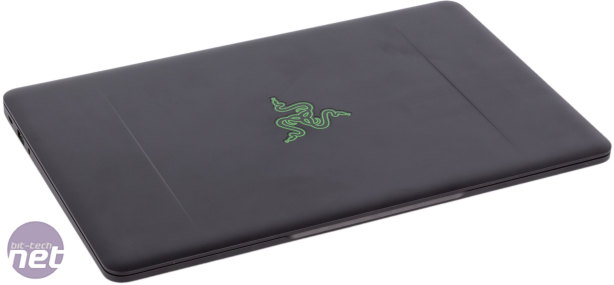
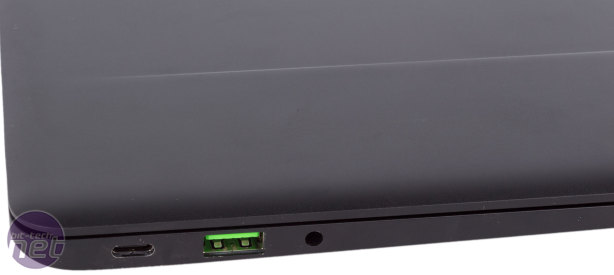
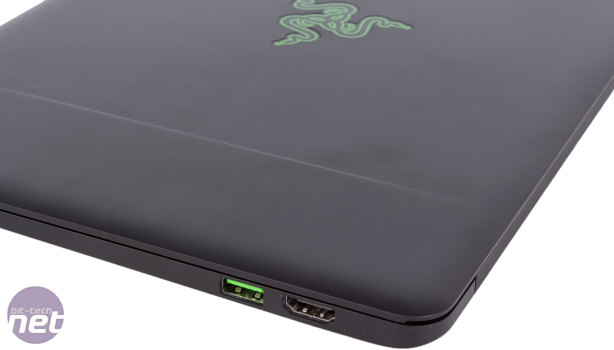

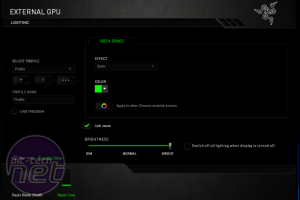

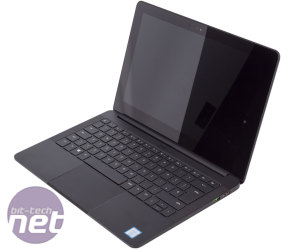







Want to comment? Please log in.